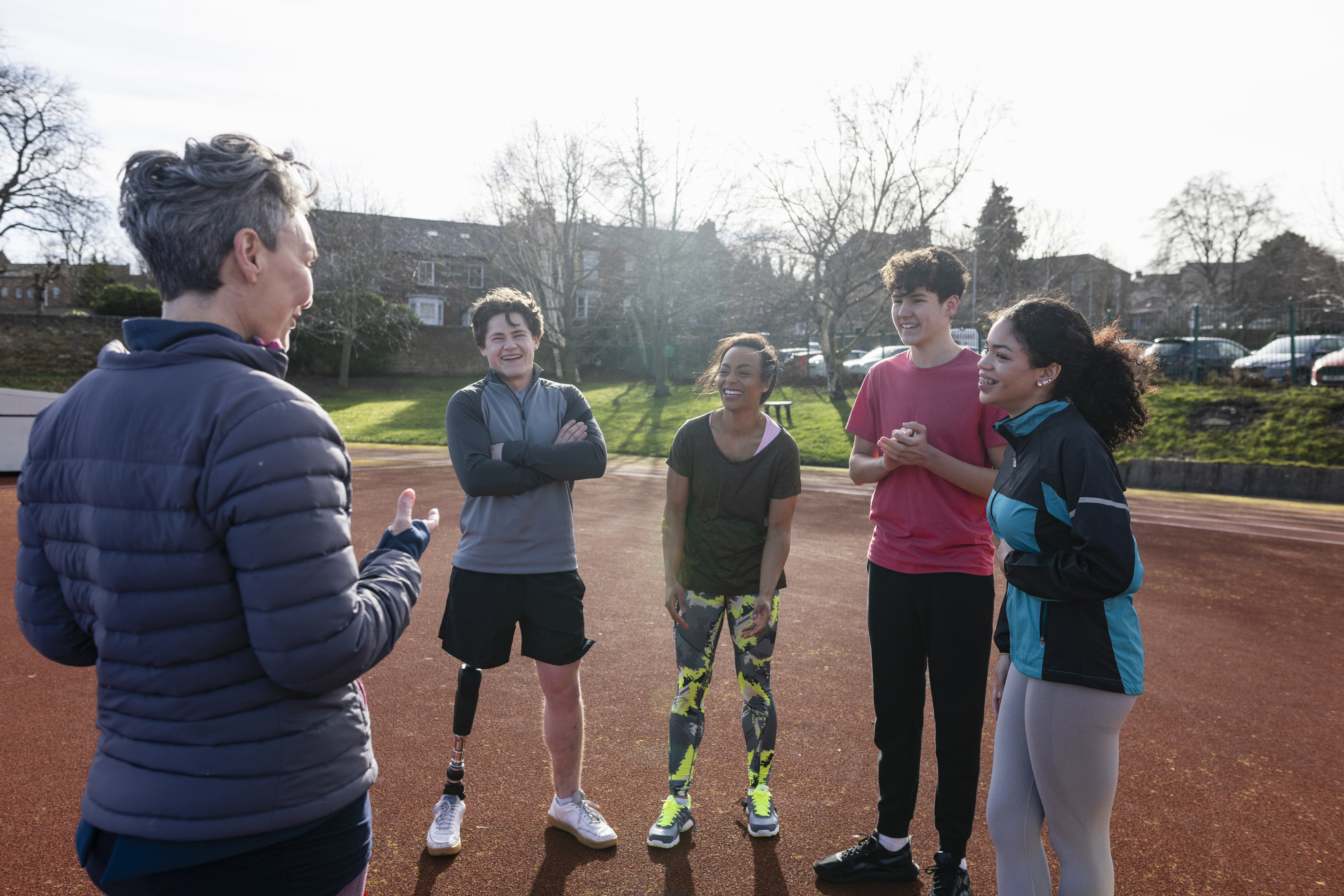
PlaySport has a new home on Ophea.net! As of September 12, 2023, Ophea’s PlaySport.net website is no longer available. Going forward, updated PlaySport activities and other resource content are accessible at ophea.net/PlaySport.
What is PlaySport?
PlaySport is an online activity-based resource designed to maximize the fun, inclusion, participation, and success of everyone when building their physical literacy. PlaySport helps children and youth develop an understanding of and competency with skills and strategies associated with physical activities and a wide range of games and sports. The activities in PlaySport can provide experiences for participants to help them build physical literacy and skills for lifelong healthy, active living.
PlaySport uses the Teaching Games for Understanding (TGfU) approach, which has been designed for use in physical education settings and successfully adapted for use in other settings (e.g., intramural, recreation, community, or after-school programs), provided appropriate measures to adhere to the safety criteria within the activities are implemented. PlaySport includes two sections developed specifically for non-curricular settings: Using PlaySport in an Intramural Setting and PlaySport for After-School Leaders.
The updated PlaySport activities feature a refreshed, more accessible linear format, and highlight student voice and choice through accessible equipment options and variations on the games. PlaySport activities continue to have direct connections to the Elementary and Secondary Health and Physical Education (H&PE) curricula, including tactics to build and enhance key movement skills, concepts, and strategies across a variety of settings and times throughout and beyond the school day.
What’s new?
Activities
There are currently 51 activities in PlaySport (reduced from 70 original activities) that have been revised and updated to reflect considerations of needs for different settings (e.g., indoor versus outdoor). The updated activities also highlight student voice and choice, and inclusion of diverse participants.
The updated activities were selected to provide the most opportunities for inclusion and cooperative play. They offer more opportunities for students to engage in their own learning and support their peers by selecting from various options for equipment, ways to send objects, rules, and strategies for gameplay. There is a “Variations” section at the end of each card which provides additional ideas and options for enhancing student success and enjoyment. Additionally, a “Pause for Learning” section includes reflection questions for students to pause and reflect on their physical literacy skill development.
Discover the updated PlaySport Activities!
Considerations to Embed Culturally Responsive and Relevant Pedagogy (CRRP)
Culturally Responsive and Relevant Pedagogy (CRRP) is a commitment to put the participant first when striving to support high-quality learning in a way that is best suited to participants’ individual strengths and needs. With the understanding and belief that all participants can learn and be successful, the root of CRRP is the belief that every participant has a story richly steeped in culture, and their stories are valued and validated within the Health and Physical Education (H&PE) curriculum and beyond. Approaching the H&PE curriculum from a CRRP lens impacts the way educators think about race, culture, identity, and equity, and how these factors contribute to inclusive program planning in H&PE.
There are many ways to approach the H&PE program with a CRRP lens. Taking this flexibility into account, PlaySport provides actionable strategies that can help educators ensure that participants feel safe and included within the teaching and learning environment when incorporating these activities into the H&PE program.
Learn more about CRRP and PlaySport.
Layout
The flow of content across all activities has changed from a columned layout to a vertical layout to improve accessibility and readability, and activity cards have been updated to reflect consistent sections (e.g., Considerations, Safety, How to Play, Variations etc.) Specific changes to the “How to Play” section enhance equity, diversity and inclusion considerations for PlaySport activities.
Terminology
In our updated PlaySport materials, Ophea refers to games in which participants work to control various zones within the playing area as “Zone Games”. Previous iterations of PlaySport, along with other external resources that draw on the TGfU approach, referred to this grouping as “Territory Games”. To align with both the Truth and Reconciliation Committee’s 94 Calls to Action and our own equity-centred strategy, Ophea refrains from using harmful colonial language. Specifically, the use of “territory” in this context, where different groups must invade, defend, or compete for control of a certain space, is an unnecessary reminder of Canada’s history of violent colonization and displacement of Indigenous Peoples. Indigenous Peoples across what is now known as Canada have ongoing relationships and histories with their traditional territories, and during our content review process it was decided, in partnership with subject-matter experts, that “Zone Games” better represents both the intent of the resource and Ophea’s commitment to our equity-centred strategy and reconciliation efforts.
Individual Pursuits
The TGfU “Individual Pursuits” category is no longer one of the listed categories within PlaySport. To promote lifelong healthy, active living for all, it is important not to limit participants to game and sport-specific activities, and many participants may prefer activities that do not involve pairs or small/large group play or competition. Engaging in diverse physical activities, cooperative games, and individual pursuits provides additional opportunities for fun, the development of fitness and movement skills, and meaningful and relevant learning experiences.
Educators, intramural organizers, and recreation providers are encouraged to provide participants with opportunities to engage in individual activities (e.g., dance, yoga, tai chi, qigong, gymnastics, athletics) to meet the diverse backgrounds, identities, needs, and interests of participants and maximize the fun, inclusion, participation, and success of everyone. These individual pursuits and activities further foster and promote the appreciation of movement, a sense of holistic well-being, and healthy, active living skills throughout the life course.
Consider accessing these Ophea resources for additional inspiration for individual activities:
Inspired to move? Explore the updated PlaySport resource at ophea.net/playsport! Be sure to share with us how you're using PlaySport activities to support physical activity throughout the school day and beyond by tagging @OpheaCanada on X (formerly Twitter), Facebook, and Instagram!
